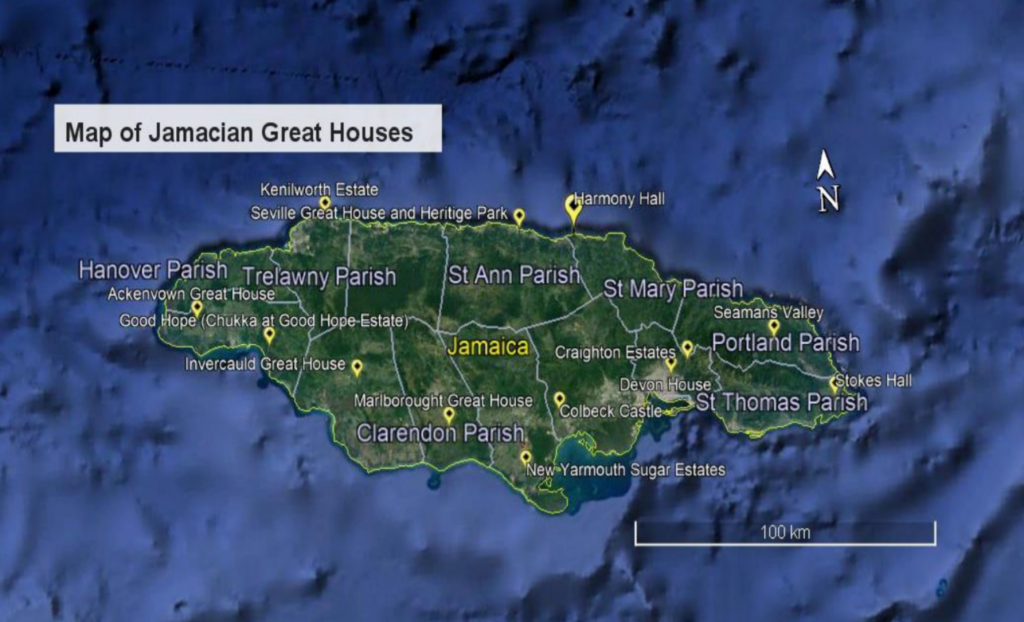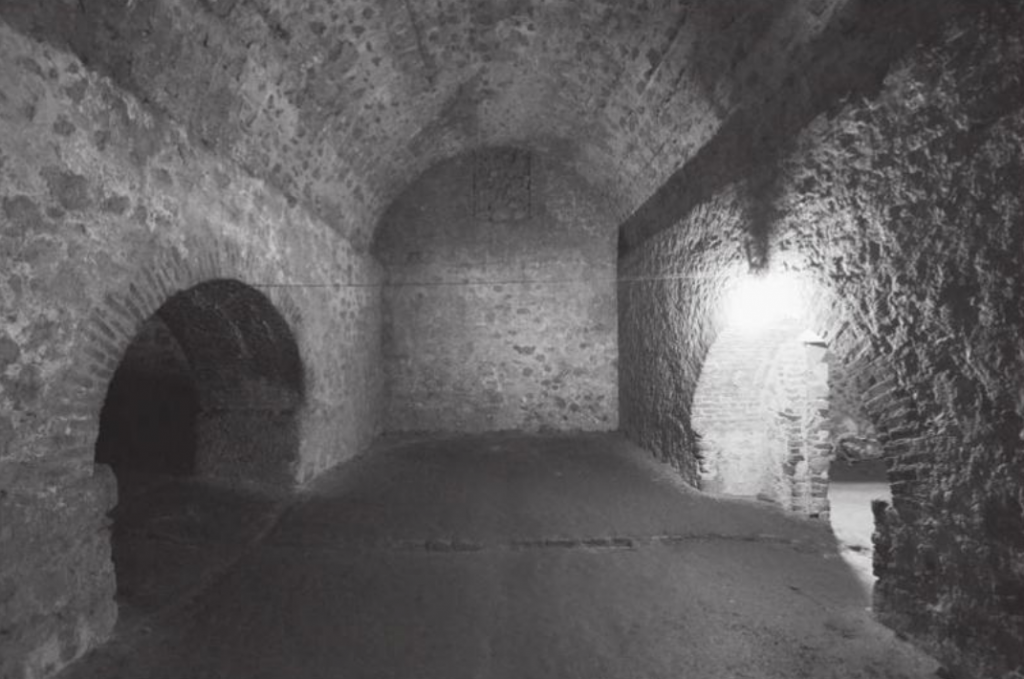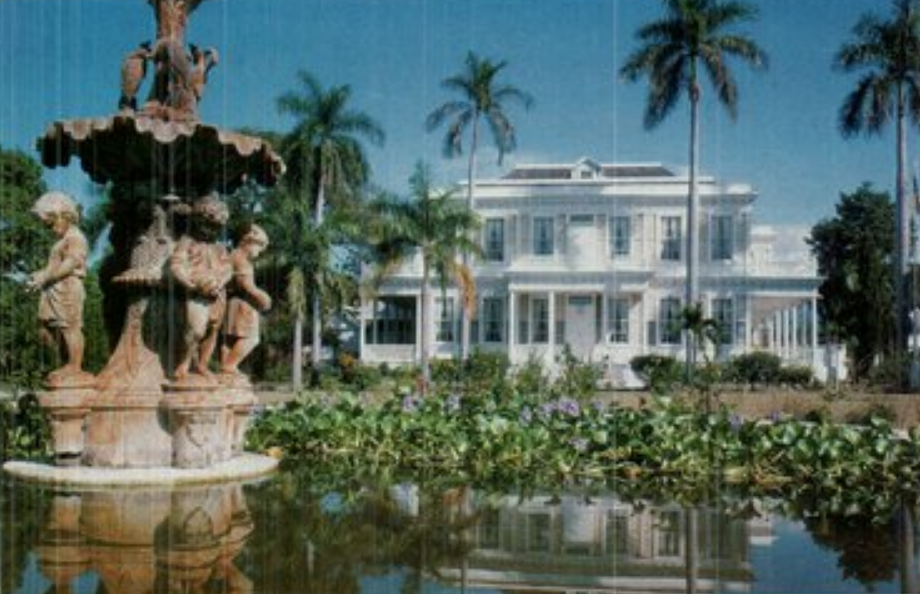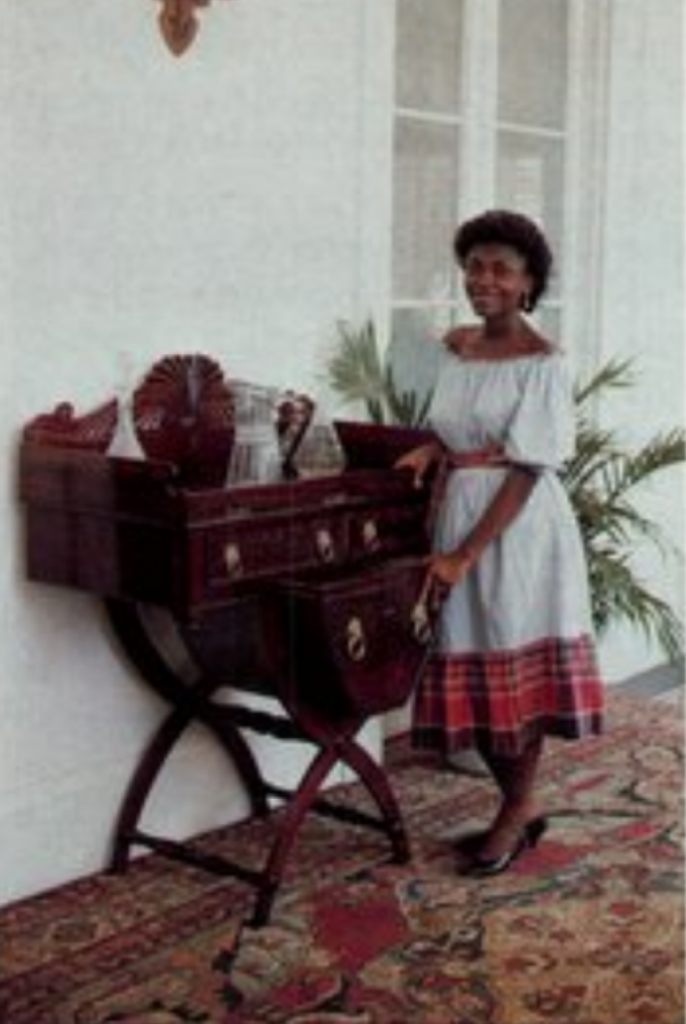Kingston, a city in Jamaica, has mostly been ignored by historians despite it being the fourth largest town in the British Atlantic before the American Revolution and the town with the largest enslaved population in British America before emancipation. Slave trade in Jamaica was at its height, from the early 1770s through to the early 19th century. Black slaves were being objectified and housing for them were referred to product storage. Enslaved people were categorized and stored according to their use and usefulness and not according to their own systems of personal relationships1. The resulting historical architecture discussed shows the rising resilience of the enslaved and the black community and the dissolution of coercion and control of the British colonial rule. The Devon House situated in Kingston (figure 1) challenged the established image of white masters and black slaves and inverted the European norms of social display.

Using the methods of social, political, and historical processes to understand varying landscape representation of Creole hybridity, requires one to view the history of Kingston. Historically, with the arrival of European settlers in the Caribbean, the indigenous inhabitants were enslaved and worked as domestics, tradesmen and boatmen. The demand for cheap labour for the expansion of the emerging plantation society required the importation of Africans to the Caribbean to support the labour market. These slaves were sold to local merchants (figure 2) and then resold to purchasers, mostly from the countryside, and who were then sent to work on plantations. The mixing of the white society with the blacks created a hybrid or Creole society, which the effects of colonialism leans heavily on. Amidst the abolition of slavery in the 1830s and the gaining of independence in 1962, there was a period of social readjustment1 through protests within the slave society in the early 19th century. Even though slavery was abolished throughout the British Empire during the 1830s2, it didn’t end colonial violence in Jamaica. After long periods of racial oppression, there are now fixed social hierarchies and hegemonies based on skin colour that reflect a whole belief system that has the white population as the economic, political and cultural leaders of colonial society in Jamaica. As blacks were no longer slaves in the late 19th century, that period is characterized by a restratification of society into a new order. This new order was more complex than white masters versus black slaves, partly because of the formation of a substantial black middle class1.

The reformers of the agitation were not aiming for political independence, but rather for representation and involvement in the local decision-making process. The social and racial order at the time rested in the naval and military power of Britain and they were not going to loosen power into the hands of the black and coloured population. They believed that there would be a way for the Crown Colony government to adapt to meet local needs while being compatible with imperial interests3. The transition to Crown Colony government in 1866 and the stabilization of government funds from 1869 permitted the Public Works Department to undertake a succession of infrastructure projects within the colony’s capital, Kingston in 1872. Starting in the 1870s, substantial private building commissions were erected in Kingston4.

In 1879, after the parish of St. Andrew sold its 18th century rectory to George Stiebel, a self-made millionaire, Stiebel commissioned Charles Lazarus to build a two-story mansion, Devon House (figure 3), completed in 18814. Stiebel was a carpenter and shipwright in his native land before migrating to Venezuela and other parts of South America. He achieved prominence by accumulating his fortune through investing in a gold mine. He was also later honoured by Queen Victoria with the C.M.G5 and contributed to civic bodies and charities with generous donations. The residential mansion was built on a large property named Devon Pen in the outskirts of the town Kingston and was initially occupied by Stiebel and his daughter, Theresa and her children until the 1920s. In 1922, it was sold to another family and the Devon House remained a family residence until 1967 when the Government of Jamaica purchased the property. The government considered tearing the house down but the Minister of Development and Welfare decided to maintain the monument to showcase Jamaica’s excellent craftsmanship and furniture-making skills, with different rooms showing different periods of Jamaica’s history of furniture design and decorations. Today the Devon House has been refurbished while maintaining most of its original brown woodwork. It is now a museum as well as a National Heritage Site (figure 4), where a series of shops have opened up to sell Jamaican products in crafts, gourmet foods, furniture and spices6.

Stiebel’s extensive knowledge of fine carpentry sets the house apart from other Jamaican buildings of the period. The sprawling mansion resembles a classic 19th century American plantation house. The grand property is surrounded by manicured lawns, with formal gardens and fountains leading visitors into the house. Blue water hyacinths float in clear pools under a canopy of tall royal palms (figure 5). There are flowering rows of hibiscus leading to the front steps6. During the 1780s, the elite Europeans carefully composed “the picturesque landscape”7 in Britain. Rich European landowners in Jamaica therefore started altering the indigenous Caribbean landscape. This alteration began with the removal of huts and hills that were deemed wild, frightening and unaesthetic. They would instead build plantation estates made in the fashion of “the picturesque” with huge Victorian styled houses to dominate the landscape7. The garden landscape, therefore, becomes a mimicry of European cultures, reflective of their societies and their aesthetic. The landscapes were basically designed to maintain a strict social hierarchy. However, the re-presentation or the refurbishing of the Jamaican house demonstrates how the physical environment serves as a touchstone for personal identity, where it highlights more of the Jamaican character through the unique wood crafts.

The style of the house is referred to as a Jamaican Great House and this monument demonstrates the skill of Jamaican craftsmanship in building Great Houses out of wood. This was an example of Jamaican Georgian architecture, but doesn’t have the heavy drapery of the English Victorian House of the period. The Italianate brick and wood7 suburban structure has a mixed furnishing and ambience of mostly Jamaican wood crafts (figure 6) with English and European structural influence. One of the more treasured furniture pieces of the house, the Cellaret which is a sideboard for liqueurs, lies in the Dining Room showcasing a Georgian-Caribbean design6. The design of the mansion also accommodates the local hot climate with the carefully constructed jalousies to direct wind currents upstairs so that the house doesn’t require fans or air conditioning6.


The Devon House is a significant example out of the Great House typology as the erection of the building explored cultural identity, and its role in divulging spaces for resistance in its defiance of racial oppression and colonial domination. During the period of the rising black middle class, Stiebel did not set up his own icons of social success, but instead hired white servants to work on the property and often travelled with them in public1. This really provoked and challenged the established European norms of social display, significantly inverting some of them with this Palladian Mansion. This threat to the establishment angered the Governor General’s wife, Lady Musgrave so much that she built a new road with an alternative approach to avoid confrontation and the invasion of her social territory1. As the Devon House takes after a similar design of plantation houses, which was the exact place where the enslavement happens, this architecture embraced and highlighted the vulnerability and violence in a society that has yet to fully accept them as equal.
By concentrating on cultural identity and power relations through racism, exploitation, and by extension issues of resistance with the Devon House, it highlights the passive resilience and increasing provocation happening at the time with the black population in Kingston, Jamaica. The mimicry of the European garden landscape is interesting where Stiebel, as a part of the coloured community, is showing that they are also able to achieve and own the ideal European built landscape. The Devon House is a symbol of resistance to racial oppression and colonial domination. This standing heritage site today continues to instill pride and unity for the black population at the time.
_____________________________\\___________________________
Notes
- Voorthuis, Jacob. “FEAR, VIOLENCE AND ARCHITECTURE IN JAMAICA: THE ARCHAEOLOGY OF A COLLISION.” Architecture in Jamaica: Poetry and Chaos. 1997. 413-421.
- Burnard, Trevor. “Slaves and Slavery in Kingston, 1770–1815.” International Review of Social History 65, no. S28 (2020): 39–65. doi:10.1017/S0020859020000073.
- Bryan, Patrick E. The Jamaican People, 1880-1902: Race, Class and Social Control. Kingston: University of the West Indies Press, 2000. 12-20.
- Robertson, James. “Chapter 14. Jamaica’s Victorian Architectures, 1834–1907” In Victorian Jamaica edited by Tim Barringer and Wayne Modest, 439-473. New York, USA: Duke University Press, 2018. https://doi.org/10.1515/9780822374626-040
- “Guide to the Honours.” BBC News. June 06, 2019. https://www.bbc.com/news/uk-11990088.
- Strologo, Sergio Dello. “Devon House: House of Dreams.” Jamaica Journal 17, no. 2 (May 1984): 33-49. https://www.dloc.com/UF00090030/00043/3j.
- Nelson, Louis. “Chapter 7. The Jamaican Creole House.” In Architecture and Empire in Jamaica, 187-218. Yale University Press, 2016.
_____________________________\\___________________________
Bibliography
Bryan, Patrick E. The Jamaican People, 1880-1902: Race, Class and Social Control. Kingston: University of the West Indies Press, 2000. 12-20.
Burnard, Trevor. “Slaves and Slavery in Kingston, 1770–1815.” International Review of Social History 65, no. S28 (2020): 39–65. doi:10.1017/S0020859020000073.
Nelson, Louis. “Chapter 7. The Jamaican Creole House.” In Architecture and Empire in Jamaica, 187-218. Yale University Press, 2016.
Robertson, James. “Chapter 14. Jamaica’s Victorian Architectures, 1834–1907” In Victorian Jamaica edited by Tim Barringer and Wayne Modest, 439-473. New York, USA: Duke University Press, 2018. https://doi.org/10.1515/9780822374626-040
Strologo, Sergio Dello. “Devon House: House of Dreams.” Jamaica Journal 17, no. 2 (May 1984): 33-49. https://www.dloc.com/UF00090030/00043/3j.
Voorthuis, Jacob. “FEAR, VIOLENCE AND ARCHITECTURE IN JAMAICA: THE ARCHAEOLOGY OF A COLLISION.” Architecture in Jamaica: Poetry and Chaos. 1997. 413-421.
___________________________\\___________________________
Images
(Figure 1) McLeod, Denise Andrea. The Land of Wood and Water: Jamaican Landscapes in Post-Colonial Caribbean Literature. Master’s thesis, York University, 2019. Toronto: York University, 2019. 243-44.
(Figure 2) Nelson, Louis. “Chapter 7. The Jamaican Creole House.” In Architecture and Empire in Jamaica, 21. Yale University Press, 2016.
(Figure 3) “Devon House Tour with Ice Cream from Kingston.” Marriott. https://activities.marriott.com/things-to-do/V28Hi37SL0EpEg-devon-house-tour-with-ice-cream-from-kingston.
(Figure 4) “Devon House Tour with Ice Cream from Kingston.” Marriott. https://activities.marriott.com/things-to-do/V28Hi37SL0EpEg-devon-house-tour-with-ice-cream-from-kingston.
(Figure 5) Strologo, Sergio Dello. “Devon House: House of Dreams.” Jamaica Journal 17, no. 2 (May 1984): 34.
(Figure 6) Strologo, Sergio Dello. “Devon House: House of Dreams.” Jamaica Journal 17, no. 2 (May 1984): 35.
(Figure 7) Strologo, Sergio Dello. “Devon House: House of Dreams.” Jamaica Journal 17, no. 2 (May 1984): 39.